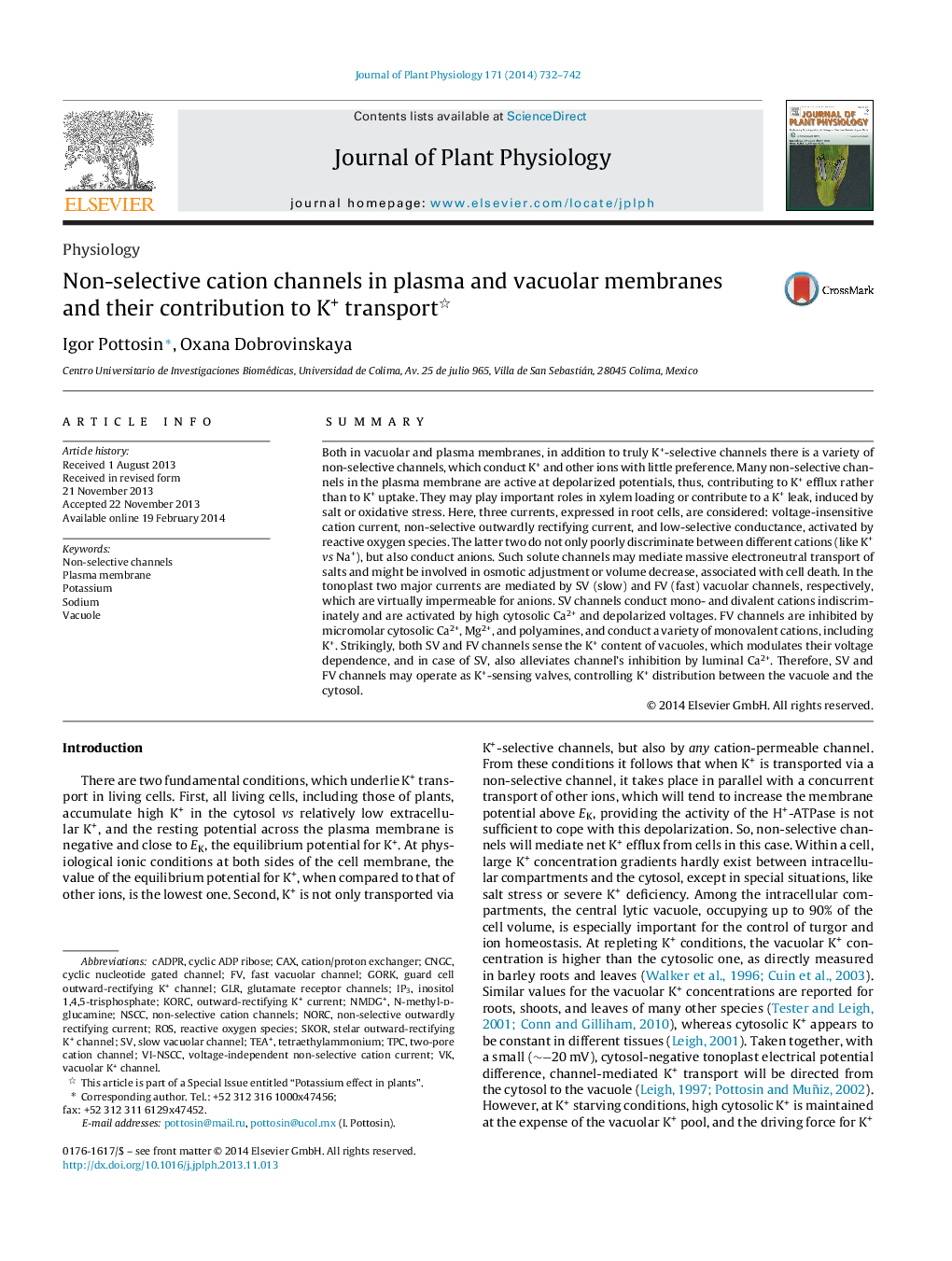| Article ID | Journal | Published Year | Pages | File Type |
|---|---|---|---|---|
| 10876880 | Journal of Plant Physiology | 2014 | 11 Pages |
Abstract
Both in vacuolar and plasma membranes, in addition to truly K+-selective channels there is a variety of non-selective channels, which conduct K+ and other ions with little preference. Many non-selective channels in the plasma membrane are active at depolarized potentials, thus, contributing to K+ efflux rather than to K+ uptake. They may play important roles in xylem loading or contribute to a K+ leak, induced by salt or oxidative stress. Here, three currents, expressed in root cells, are considered: voltage-insensitive cation current, non-selective outwardly rectifying current, and low-selective conductance, activated by reactive oxygen species. The latter two do not only poorly discriminate between different cations (like K+vs Na+), but also conduct anions. Such solute channels may mediate massive electroneutral transport of salts and might be involved in osmotic adjustment or volume decrease, associated with cell death. In the tonoplast two major currents are mediated by SV (slow) and FV (fast) vacuolar channels, respectively, which are virtually impermeable for anions. SV channels conduct mono- and divalent cations indiscriminately and are activated by high cytosolic Ca2+ and depolarized voltages. FV channels are inhibited by micromolar cytosolic Ca2+, Mg2+, and polyamines, and conduct a variety of monovalent cations, including K+. Strikingly, both SV and FV channels sense the K+ content of vacuoles, which modulates their voltage dependence, and in case of SV, also alleviates channel's inhibition by luminal Ca2+. Therefore, SV and FV channels may operate as K+-sensing valves, controlling K+ distribution between the vacuole and the cytosol.
Keywords
Related Topics
Life Sciences
Agricultural and Biological Sciences
Agronomy and Crop Science
Authors
Igor Pottosin, Oxana Dobrovinskaya,
